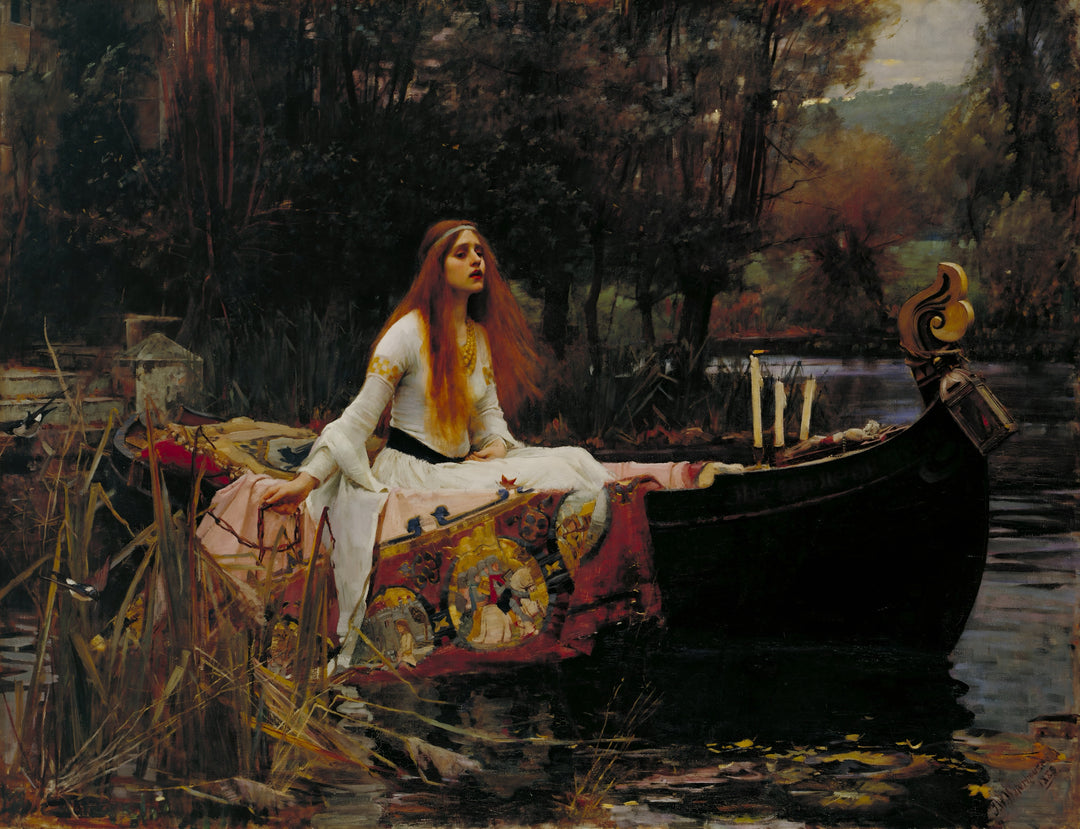
The Lady of Shalott by Waterhouse
- Oil painting on canvas
- 100% Hand-painted
- View quality of this painting
- Shipping
- Return Guarantee
| Author: | Waterhouse |
|---|---|
| Title: | The Lady of Shalott |
| Original location: | Tate Britain, London, England |
| Year: | 1888 |
This masterpiece, painted in 1888 by John William Waterhouse, is an iconic work of the Pre-Raphaelite movement, characterized by its meticulous detail and focus on romantic and symbolic representation.
This painting is based on the eponymous poem by Alfred Tennyson, capturing the moment when the lady, trapped in a curse, decides to defy her fate, sailing towards her inevitable death, and the ballad sings thus:
"In the stormy and tense east wind, the woods of pale yellow faded. The wide river, on its banks, complained. Strongly, the gloomy and cloud-laden sky rained over the lofty Camelot. She descended and found an abandoned boat floating under a willow, and on the prow she wrote: The Lady of Shalott."
"And, sailing downstream, in its vast somber expanse, like a bold seer in a trance, seeing all her own misfortune, with a glassy expression, she looked toward Camelot. And, as the day fell, she released the chain and lay back; the wide river carried her away, the Lady of Shalott."
"Lying, dressed in immaculate white that floated loosely to the left and right, the leaves fell lightly over her. Through the noises of the night, she floated downstream towards Camelot; and, as the prow advanced between hills and fields of willows, her last song could be heard, the Lady of Shalott."
Waterhouse's composition, with its attention to natural details and the melancholic expression of the protagonist, reflects the influence of Romanticism, but also incorporates deep and complex symbolism, typical of Pre-Raphaelitism. It is notable in the work of the English master the portrayal of the end of this lady's story, who, detached from reality and gripped by the fear of suffering, finally, "tired of the shadows," decides to leave her safety and seek what is good and beautiful, even at the cost of losing everything. This explains why, of the three candles, only one remains lit, as a sign that she is dying, that she is in her last breath or sigh of life. With her mouth open, she sings to love, and with the crucifix in front, she shows that this pain, this effort, this journey is worth it.
The use of rich colors and precision in botanical elements underlines the contrast between the beauty of nature and human tragedy, a recurring theme in Waterhouse's work. Through this painting, Waterhouse pays homage to Tennyson's poetry and contributes to the revival of visual storytelling in Victorian painting.